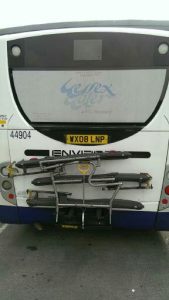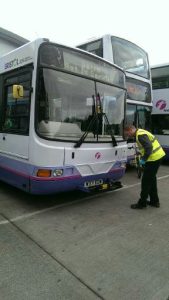Cities & Areas in UK
Pilot Project - Solent Area
The Solent region will be an ideal area for piloting fitting the bike rack to the front of buses.
Possible routes could include:
- Portsmouth: Park & Ride from Tipnor to the city centre
- Portsmouth: Hovercraft service from the city centre and The Hard to the Southsea hovercraft terminal
- Southampton: from Park & Ride sites in to the city Centre
- Isle of Wight: the Island is trying to become cycle friendly and the bus racks would make a major contribution to this aim. They would be great for marketing and could feature on all literature and advertising
The racks are not expensive and can easily be fitted to all buses currently in operation in the area. The bus operators are generally open to new innovation like this.
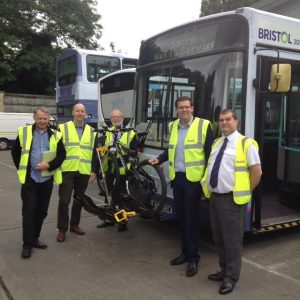
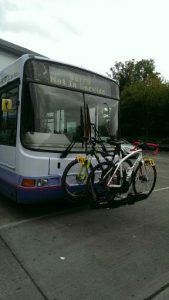
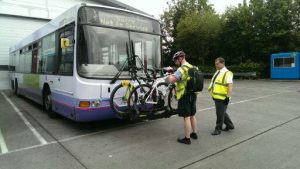
Nottingham
University Hopper Services
All of the Nottingham University Hopper buses now carry 2 bikes on the rear of the bus, using the popular Sportworks Velo-Porter 2 bus rack.
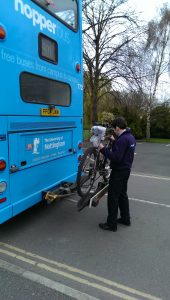
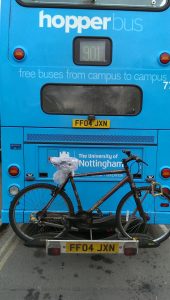
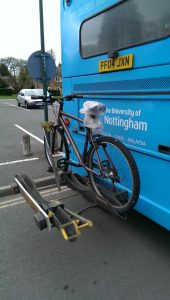
They were introduced after an extensive trial period, when a small number of buses were fitted with the bus racks for testing. Some of the Halls of Residence are situated a few miles from the main campus or other buildings, so there is a dedicated bus service that connects these.
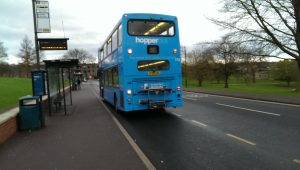
Many cyclists are using the bike and bus-rack for the long part of the journey, then finishing their journey by bike. The bus company wanted to fit them on the front, but guidance from DafT meant these needed to be on the rear
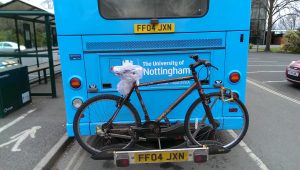
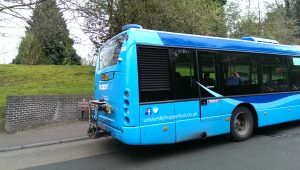
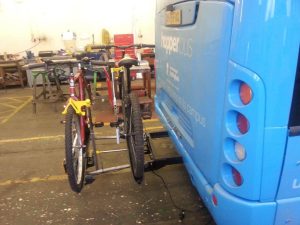
Bath
The City of Bath is located in a valley whilst the university, hospital and residential areas are on higher ground overlooking the city. There is a real need to carry bikes on buses for the return trip uphill if cyclists have ridden down on their bikes.
The bus service that connects the large Wessex Water offices with the surrounding area have been fitted with the BOB bus racks on the rear.
First Group were keen to carry out a pilot scheme with bike racks on the front of their buses, with the support of the local MP, council officers and the cycling campaign group to get LSTF funding. Although close to getting DfT approval, the funding lapsed and the local Tory MP lost his seat leading to the end of the project.

Fareham/ Portsmouth
Lucketts Coaches
The 2 bike velo-porter bus racks were fitted to the rear of minibuses that connected the area with the DSTL research site at the top of Portsdown Hill.
The roads up to the research site are fairly steep and, although ideal for sports cyclists out on a training ride, are a hard slog for commuters of a morning.
However, at the end of the day, the return trip downhill would be enjoyable for any cyclist.
